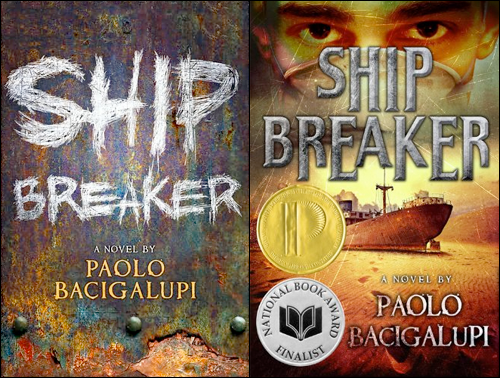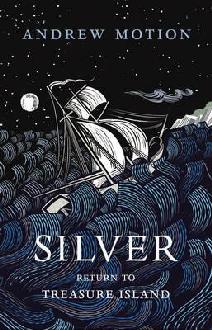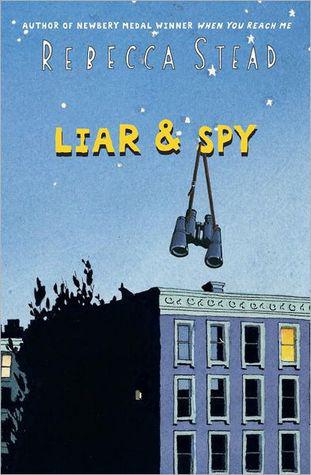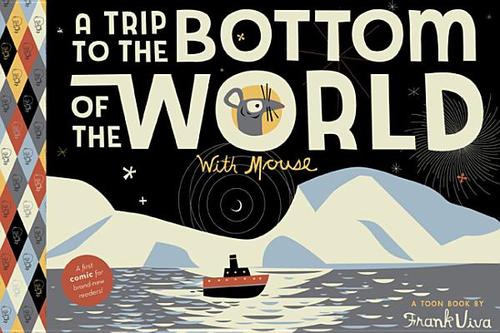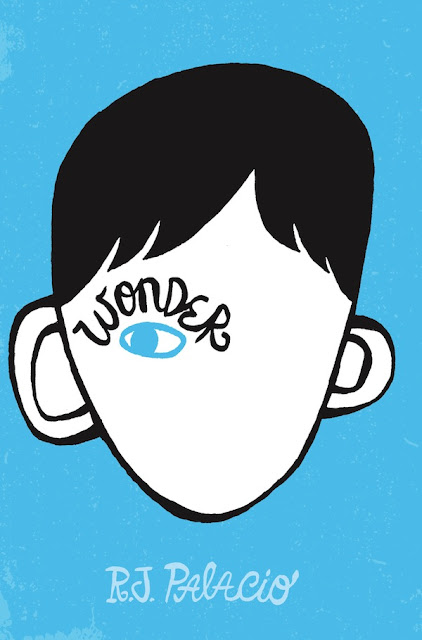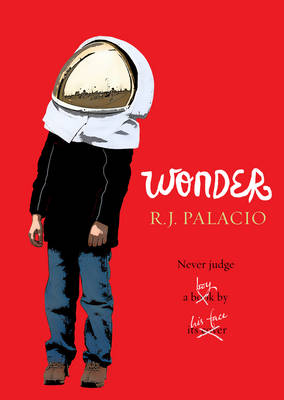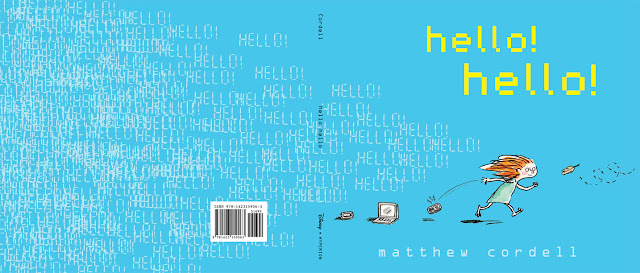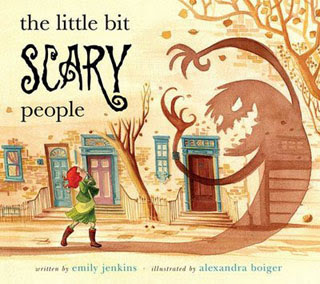Main character Nailer Lopez is a ship breaker on Bright Sands Beach. The world he lives in is one that has been changed dramatically, mostly by the depletion of natural resources that has left oil a scarce and valued commodity and the land constantly threatened by "City Killers," storms that make Katrina look meek and drown cities. In fact, New Orleans is one of the locations in Ship Breaker, a city that has been rebuilt a number of times, only to be destroyed again and again by the violent storms. It is one of these City Killers and a young girl trying to escape the underhanded dealings of her family, the Patels, part of the 1% that now owns the world, that starts this story moving. But first, we are treated to an intimate look into the brutal, tenuous, exhausting life of a ship breaker. When we first meet Nailer, a wiry teen, he is working with his crew, crawling through the air ducts of a beached freighter ship, looking for copper and maybe a cache of undetected oil that will be his lucky break and pull him out of poverty. Nailer is almost too big for this job on the light crew, but he is desperate to keep since Sloth, a smaller, wiry girl, is just waiting for him to make a slip, and he is still to small to work heavy crew. After pulling out more copper wire than he had expected, Nailer is sent back in for more because a storm is headed their way and there will be no work for days until it passes. What follows is a harrowing scene in which Nailer falls through a duct and into a pool of oil and begins to drown. When Sloth finally comes along, instead of rescuing him, she leaves him, tossing a packet of food and a water bottle just out of his reach, and breaking the blood oath of the light crew never to leave a man behind. Through determination, conviction and a spectacular explosion, Nailer rescues himself and Sloth is kicked off the crew and down the beach, an outcast. Nailer earns himself the nickname Lucky Boy.
He also earns offerings, gifts to the Fates, rice, roasted pigeon meat and liquor, rarities and extravagances he rarely experiences. One fantastic thing that Bacigalupi does in Ship Breaker is toy with the idea of fate and luck and how extreme poverty can make a person feel like there is no other way out of desolation besides luck. There are other religions and beliefs that emerge throughout the novel, but the idea of fate and luck is one that keeps coming up again and again. No matter how lucky Nailer is, he still has to live with his unpredictable, viciously violent, drug addicted father, the infamous Richard Lopez who, when he is "sliding" on meth is capable of killing three men bigger than him in a fight, despite his wiry build. Despite this, when the storm destroys their home and threatens death, Nailer gets help to move his wasted, unresponsive father to higher ground even though he knows his death would bring relief to him and others. While surviving a near drowning in oil earns him the luck of the fates and a new name, Nailer finds a different kind of luck when, after the storm, he and his best friend and crew boss Pima discover a wrecked clipper, out of view of the rest of the inhabitants of Bright Sands Beach - for the time being. Nailer has dreamed of sailing on a clipper - a ship that uses solar power, the wind and a special sail that allows it to lift above the waves to propel it across the seas at a furious speed. As he and Pima climb aboard and begin to scavenge, they are stunned by the luxuries they find. Refrigerators hold pounds and pounds of meat, now rotting with the loss of power, fine china and silver services are stored in cupboards and bags and bags of rice line the storerooms. Nailer and Pima also come upon a girl, pinned under piles of furniture, but clearly alive. Pima wants to cut off her fingers and steal her rings, then slit her throat, but Nailer can't bring himself to do this.
Letting Nita, who earns the nickname Lucky Girl, live plunges Nailer and Pima into an increasingly dangerous and violent situation. Nita assures them that they should let her live because her people will find her and reward them, and Nailer begins to hope for a better life. Until his father finds the wreck and the kids and, after battle with his captors, Nailer and Nita go on the run. Tool, a genetically engineered man who is part human, part hyena and part dog, bred to be loyal to his master and kill himself if his master dies, goes with them at the insistence of Sadna, Pima's mother, who is the moral compass of the story. Tool is an interesting character, especially because he has managed to survive without a master and it is never entirely clear where his loyalties lie. The three head to the drowned city of New Orleans with the hopes of finding a ship belonging to Nita's family. The plot deepens as Nailer learns that Nita's uncle by marriage has discovered an illegal way to acquire oil and transport it to the black market, but her father and owner of the company, will go along with his plans. The uncle, Pyce, decides to kidnap Nita and use her as leverage against her father, which is why she was fleeing and sailed into the storm. The introduction of the Dauntless and its crew, all loyal to Nita's father and determined to find her, allow Nailer on board the clipper he has always dreamed of but also bring up issues of class, wealth and treatment of the poor. In fact, Nailer, Nita and Tool find themselves in many arguments about this as well. Bacigalupi does not miss a chance to illustrate this in a world where the gulf between the rich and the poor is as vast as the oceans that now cover more of the earth than ever before. Nor does he shy away from putting Nailer in situations where he has to make very difficult, starkly life-or-death decisions over and over. But, he also balances this with his fantastic storytelling skills. Ship Breaker is filled with more twists and turns and breathtaking moments than anything I have read since I cracked the spine of Hunger Games in the fall of 2008.
The sequel, The Drowned Cities, follows two new characters, Mouse and Mahlia, as they flee the war-torn city for the jungle outskirts where they come across a wounded half-man... Yes! It's Tool! My favorite character from Ship Breaker!
